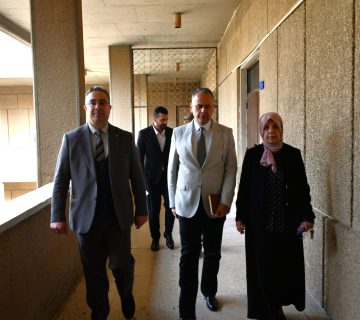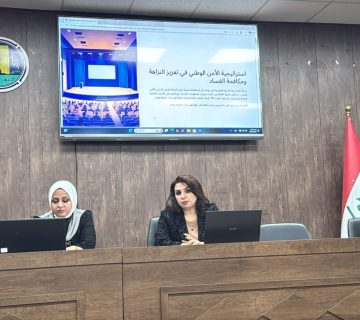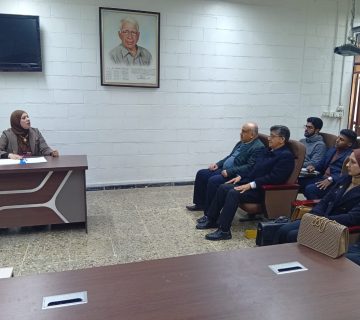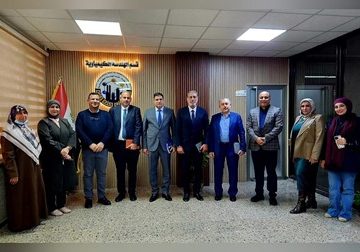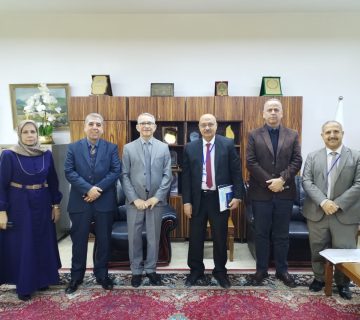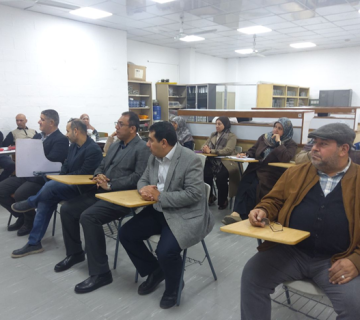A Thesis discussion was held on Monday 17-7-2023 in Prof. Dr. Najeeb Kharufa Hall. This thesis was presented by student (Worood Husain Ghadhban Kareem) and titled as:
“Applying Neural Computing Models in Monitoring Seepage Flow:
Al-Hindiya Barrage –Iraq as a Case Study”
After discussing the student, listening to his defense, and evaluating the level of the thesis, the student was granted a master’s degree in Water Resources Engineering – Water Resources. With a degree of (High Very Good)
The discussion committee was consisted by the following:
Prof. Dr. Kadhum Naif Kadhum ————————————— Chairman
Asst. Prof. Dr. Ali Omran Muhsin ———————————– Membership Asst. Prof. Dr. Zuhair Kadum Jahan Keer ————————— Membership
Asst. Prof. Maysam Thamir Mutasher —————————— Supervisor
The Thesis Abstract as : –
The study validates the proposed model’s accuracy in analyzing the Al-Hindiya Barrage data, providing insights into its behavior and safety, including uplift pressure, seepage flux, and water XY gradient. Safety assessments, like the Factor of Safety, ensure the facility’s stability within acceptable limits. Reliable software and linear regression support the study’s validity. It explores neural computing models’ effectiveness in predicting seepage flow, outperforming traditional methods in capturing non-linear patterns. These models benefit hydraulic engineers, optimizing monitoring strategies and risk assessment. Overall, the study highlights the importance of neural computing models, achieving a 96.3% explanation of seepage flow variation based on independent variables at the Al-Hindiya Barrage.
The Main Objectives for this Thesis are:
This study highlights the importance of neural computing models, achieving a 96.3% explanation of seepage flow variation based on independent variables at the Al-Hindiya Barrage.
Conclusions
This research demonstrates the effectiveness of neural computing models in monitoring seepage flow at the Al-Hindiya Barrage. The models offer valuable insights for managing seepage-related issues in hydraulic structures. The study’s analysis showed good performance and accuracy, indicating stability and safety compliance. The high R-squared value (0.963) confirms the models’ ability to explain 96.3% of the seepage flow variation based on independent variables. These models provide a reliable tool for prediction, monitoring, and managing seepage flow, with potential applications in similar hydraulic structures.
Recommendations:
- Further Develop Neural Computing Models for Seepage Flow Monitoring: Future research should focus on enhancing the use of neural computing models for seepage flow monitoring. This can involve conducting additional experiments, collecting more data, and analyzing different case studies to validate and improve the effectiveness of these models.
- Explore Different Neural Network Architectures and Advanced Techniques for Enhanced Accuracy: Researchers should explore various neural network topologies and other state-of-the-art machine learning approaches to improve the accuracy of seepage flow monitoring. Techniques like convolutional neural networks and recurrent neural networks can enhance comprehension and prediction.
- Incorporate Additional Variables or Environmental Factors to Improve Predictive Capability: To enhance the predictive capability of the models, it is essential to consider the incorporation of additional variables or environmental factors. Factors such as soil composition, weather conditions, groundwater levels, and geological characteristics could significantly impact seepage flow behavior. By including these variables in the models, more accurate and reliable predictions can be achieved.



